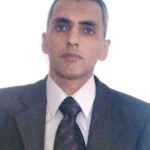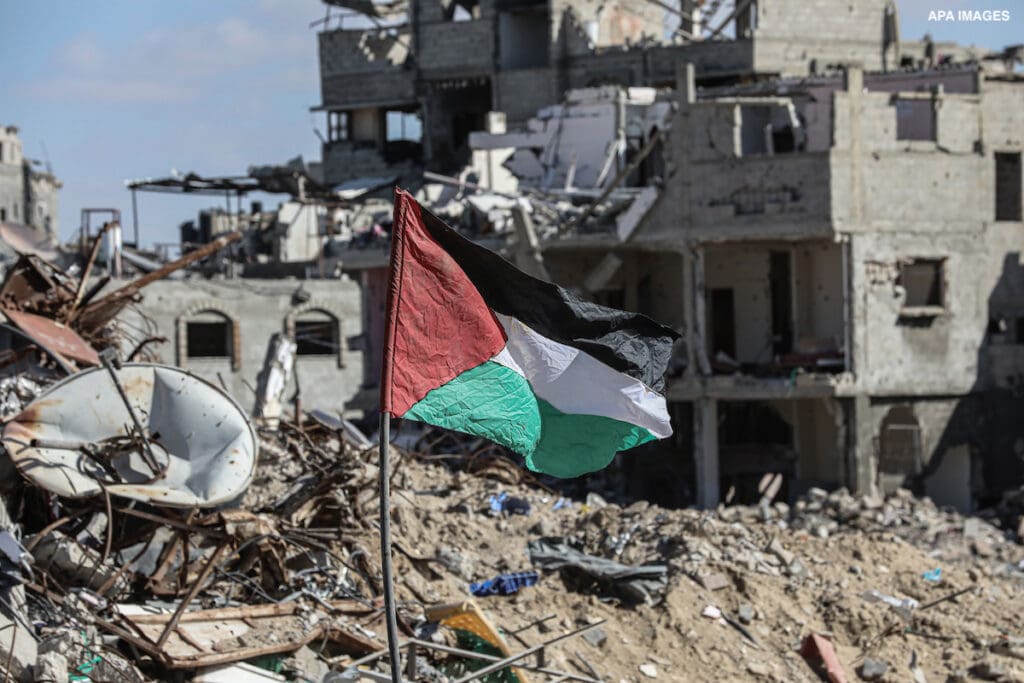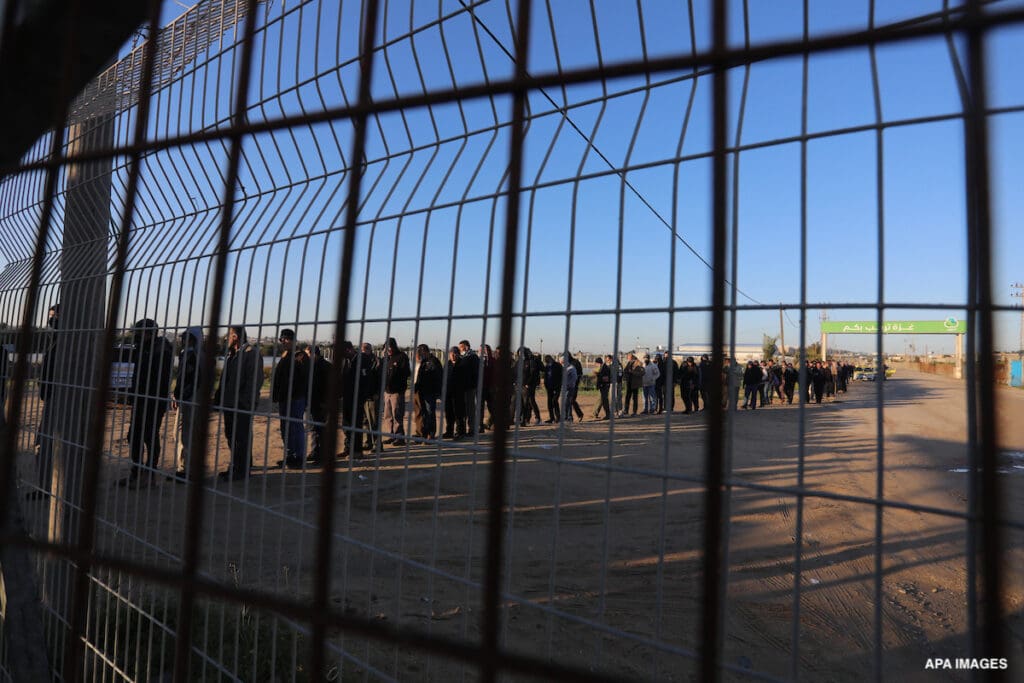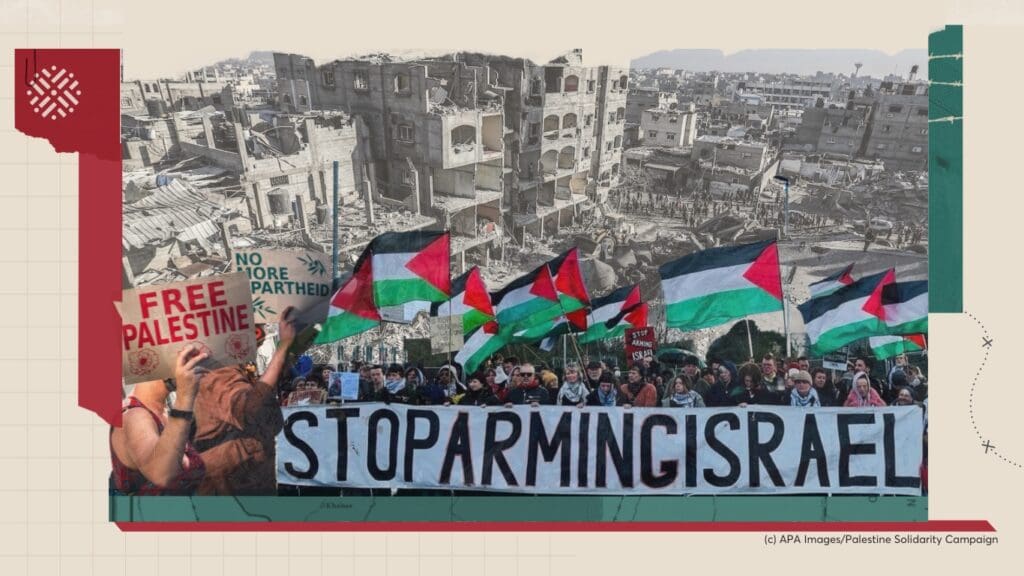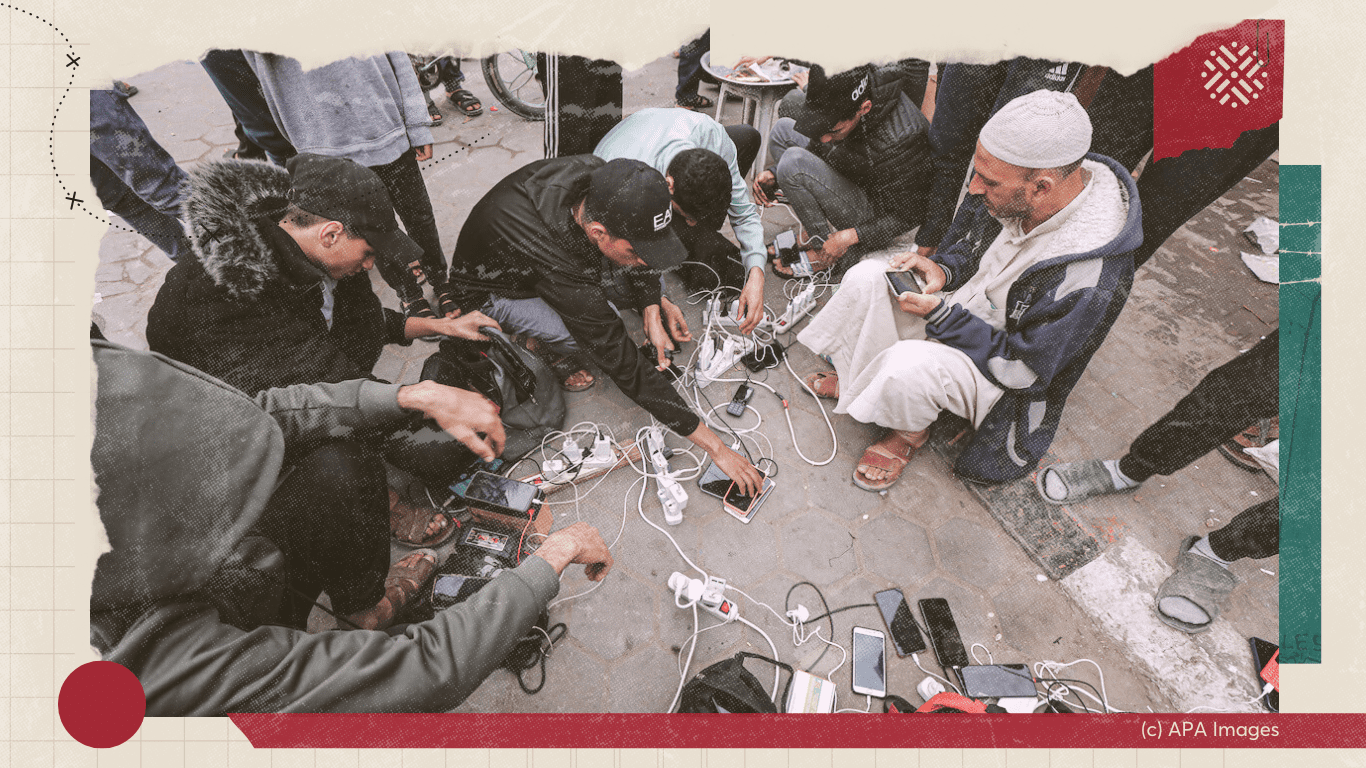
Introduction
In the 21st century, telecommunications—particularly the internet—have become indispensable tools in the global struggle for freedom and dignity. For Palestinians in Gaza, who have endured over 17 years of Israeli blockade and many more decades of Israeli colonial occupation, the internet serves as a critical lifeline: a channel to communicate with the outside world and share their lived reality with an international audience. Aware of its potential, the Israeli regime has long sought to dominate and suppress the Palestinian digital landscape.
Data from the Palestinian Central Bureau of Statistics reveals that internet usage among individuals aged 10 and older reached approximately 88% in 2022—92% in the West Bank and 83% in Gaza. These statistics underscore Palestinians’ increasing reliance on the internet for education, work, and commerce, as well as its vital role in bridging the deepening fragmentation of Palestinian society by connecting families across geographic and political divides. Still, Palestinians in the West Bank and Gaza face significant barriers to digital access imposed by the Israeli occupation. In the West Bank, the Israeli government imposed restrictions on Palestinian telecommunications companies that were only granted access to 3G technology in 2018 and 4G in early 2023. Meanwhile, it trapped Gaza in the past, with only 2G access—making it one of the most digitally isolated regions in the world. Since the onset of Israel’s genocide in Gaza, these digital challenges have escalated into a full-blown crisis.
At the time of publication, the implementation of the first phase of the ceasefire agreement between Hamas and the Israeli government was underway. The deal comes after Palestinians in Gaza endured a devastating 15-month-long genocidal war that claimed tens of thousands of lives and injured many more. Israel’s intense shelling of Gaza has had a catastrophic effect on its infrastructure, including the telecommunications network. Systematic and widespread destruction of infrastructure by Israeli forces has caused shocking declines in internet and telecommunications access, plunging much of the population into prolonged communication blackouts. Without connectivity, Palestinians in Gaza have been unable to access crucial information, request aid, or stay in contact with loved ones. The Israeli regime has also severely hampered the health sector, as the loss of communication networks disrupts emergency medical responses. Although municipalities have been able to make some improvements in internet access, overall connectivity remains limited, falling to 80%.
This policy brief examines the devastating impact of the Israeli regime’s actions on Gaza’s telecommunications infrastructure and internet access. It situates Israel’s attack on the communications sector within the broader framework of neo-colonialism. It explains how Israel’s stranglehold on the Palestinian digital infrastructure strengthens its political and economic hegemony, which is one of the most important features of the Zionist settler colonial project. It also highlights the resilience of Palestinians resisting enforced communication blackouts. It finally offers actionable recommendations for the international community to support enhanced digital access in Gaza and break its technological dependence on Israel.
Israel’s Control over Gaza’s Digital Landscape
The Israeli regime exercises extensive control over Gaza’s digital landscape through a multifaceted strategy that limits Palestinians’ ability to stay connected to one another and the outside world. This Israeli reign over Gaza’s digital landscape is achieved by keeping technological advancements to a minimum, systematically destroying telecommunications infrastructure, obstructing repairs, and manipulating connectivity to serve its interests. Simultaneously, the Israeli government pushes its narrative, silencing Palestinians to amplify its messaging and secure global sympathies. These intertwined efforts have far-reaching consequences for Palestinians, from their daily lives to their psychological well-being and international representation.
Limiting Connection and Manipulating Connectivity
Since the siege on Gaza began in 2006, the Israeli government has deliberately targeted the area’s telecommunications infrastructure, repeatedly bombing transmission stations, communication towers, and cellular facilities. These attacks, coupled with deliberate power blackouts, have left the telecommunications infrastructure in disarray. Palestinian telecommunications providers face severe restrictions on importing essential repair equipment, such as fiber optic cables, further compounding the damage caused by Israeli assaults.
The Israeli government forces Palestinians in Gaza to rely on outdated technologies such as 2G mobile networks, which impede their ability to communicate with each other and connect to the outside world Share on X
Additionally, the Israeli government controls Gaza’s electromagnetic sphere, heavily restricting Palestinian access to radio frequencies and internet connections. By routing all fiber-optic connections in Gaza through its territory, the Israeli regime ensures complete oversight and control over the flow of information. This control enables the deliberate manipulation of connectivity, preventing Palestinians from communicating effectively during crises and suppressing their ability to organize or resist occupation.
Control of telecommunications infrastructure as a central colonial tool goes beyond targeting cell towers or blocking essential equipment. The Israeli government forces Palestinians in Gaza to rely on outdated technologies such as 2G mobile networks, which impede their ability to communicate with each other and connect to the outside world. This technical control reflects the occupation’s tactic of containment, keeping Gaza connected enough to survive but sufficiently isolated to restrict the liberation movement. Israel’s restriction of telecommunications constitutes an invisible element of its occupation, where the occupier controls not only physical borders but also the digital space, transforming technology from a means of liberation into a tool of domination. This colonial tactic redefines the concept of censorship, whereby the Israeli regime deploys it not only to silence the voices of the indigenous people of the land but also to impose a reality in which Palestinians cannot control their means of communication.
Amplifying Israel’s Skewed Perspective
This digital dominance plays a critical role in Israel’s broader media strategy. By frequently disrupting internet and communication access, the Israeli regime manipulates the flow of information to reinforce Zionist narratives while concealing its atrocities. The Israeli government policies ensure Palestinians are systematically silenced, prevented from sharing their experiences with the international community, and forced into a state of information dependency. This deliberate internet blockade and isolation ensures that Israeli perspectives dominate the global discourse, marginalizing Palestinian voices and shielding Israeli actions from scrutiny. Israel’s control of the flow of information is not just a transient policy but rather part of a comprehensive strategy of digital occupation that paves the way for complete control of the media landscape. The consequent media blackout imposed on Gaza allows the occupation to continue its genocidal policies unabated.
Research reveals that during key moments of military offensives, Israel not only disrupts communication within Gaza but also blocks access to global digital platforms that might expose its violations. By silencing Palestinians and shaping global perceptions, the Israeli regime uses the digital landscape to further its colonization and occupation goals while presenting a skewed reality of the siege to the world. In this context, control over the flow of information in the digital sphere is an extension of the military occupation, as Israel uses its narrative as a means to reshape the world’s perception of the conflict.
Israel’s restriction of telecommunications constitutes an invisible element of its occupation, where the occupier controls not only physical borders but also the digital space Share on X
While the Israeli regime implements digital blackouts to obscure the Palestinian narrative, it also resorts to advanced technologies such as artificial intelligence to analyze content and monitor Palestinian discourse on digital platforms. These practices aim to control what is said and how and when it is said. Notably, this strategy relies on the same technological tools that ّthe Israeli government denies the Palestinians access to. While Israel develops its digital infrastructure to present itself as a high-tech haven, it keeps Gaza in a state of digital lock-up, where Palestinian voices are blocked and access to the latest technologies is limited.
The Consequences: Isolation, Alienation, and Narrative Control
The impact of Israel’s control of Gaza’s digital connectivity is profound and multifaceted. On a practical level, the destruction and manipulation of telecommunications infrastructure disrupt critical aspects of life in Gaza, from healthcare and job security to emergency response capabilities. Psychologically, the lack of connectivity fosters a sense of fear and isolation, amplifying people’s feelings of helplessness and disorientation. The Israeli regime uses communication blackouts as a form of collective punishment, as they reinforce the isolation of Palestinians from each other and the outside world. These blackouts deprive them of contact with families and friends who might help them mitigate the impact of the siege and destruction. This phenomenon, often termed “digital alienation,” undermines the social fabric essential for collective survival and resistance under occupation. Consequently, individuals become isolated from their society and deprived of crucial tools of expression. The internet is, after all, both a communication tool and a space for resistance and existence. When the Israeli regime denies Palestinians their digital rights, it deprives them of key tools for self-determination and the ability to challenge the narratives of the occupation.
Until October 2023, these efforts to keep Palestinians disconnected also contributed to a dominant colonial narrative. By amplifying its own position while silencing Palestinians, Israel managed to garner international sympathies and evade accountability for its actions, especially so in a besieged Gaza. The dominance of the Israeli narrative has long-term implications, shaping perceptions of the occupation and the broader Palestinian struggle for liberation.
Telecommunications Amid the Genocide
Since the start of the genocide in October 2023, Israel has escalated its strategy of targeting Gaza’s connectivity, deliberately bombarding critical infrastructure to deepen isolation and disrupt Palestinian resistance to occupation and colonization. The Arab Center for the Advancement of Social Media, 7amleh, estimated that Israeli forces destroyed over 50% of Gaza’s telecommunications infrastructure and damaged an additional 25%. These figures likely underestimate the extent of the devastation, as PalTel—Palestine’s largest telecommunications company—reports its network remains 80% offline. Amid minimal power availability and constant outages, Israeli strikes and embargo on repair materials have thwarted attempts to recover services. In a brazen escalation, Israeli forces have repeatedly targeted and killed repair workers, even when international organizations shared their coordinates with the Israeli army in attempts to ensure safe passage.
Surviving infrastructure now relies almost entirely on generators fueled by scarce diesel supplies, making telecommunications services precariously dependent on fuel availability. In March 2024, rebuilding the sector was estimated to cost at least $90 million, but the financial toll extends far beyond reconstruction. The total value of infrastructure losses destroyed by Israeli forces in Gaza reached approximately $18.5 billion. The executive director of the Palestinian Telecommunications Regulatory Authority announced that direct and indirect losses in the telecommunications sector are estimated at half a billion dollars. At the same time, the scale of the devastation threatens the continuation of services even after the genocide stops.
The ripple effects of this destruction extend across critical sectors in Gaza, particularly disrupting healthcare and humanitarian efforts. Robust telecommunications are essential for coordinating medical and relief operations, and service disruptions have put countless lives at risk. Hospitals and emergency responders cannot effectively communicate or coordinate medical care, leaving patients unable to access lifesaving assistance. Doctors Without Borders has confirmed that communication blackouts jeopardize medical efforts and exacerbate civilian suffering. At the same time, the World Health Organization has documented multiple fatalities resulting from the inability to contact emergency medical services in time.
While Israel develops its digital infrastructure to present itself as a high-tech haven, it keeps Gaza in a state of digital lock-up, where Palestinian voices are blocked and access to the latest technologies is limited Share on X
In an increasingly digital world, Gaza’s telecommunications crisis has also destabilized its financial sector, worsening economic conditions. Internet outages have halted international and local money transfers, preventing Palestinians from accessing bank accounts or conducting essential financial transactions.1 The effective shutdown of Gaza’s banking system has triggered a severe liquidity crisis, leaving families without cash to meet their basic needs.
These disruptions have also had a devastating impact on employment, particularly among young Palestinians who previously relied on remote work to sustain their livelihoods. With unemployment rates exceeding 79% before October 2023, remote programming, design, and translation work offered rare income opportunities in a besieged territory where travel and mobility are severely restricted. However, since the genocide began, erratic internet access has forced many remote workers into unemployment, eliminating a vital income stream at a time when Israeli-induced famine has sent the cost of essential goods soaring.
The disintegration of remote work opportunities is particularly damaging for Gaza’s youth, who are disproportionately affected by the economic devastation. The inability to earn an income amid skyrocketing food prices has led to rising poverty and despair among this critical demographic. This deepening of financial hardship among Palestinians is a deliberate consequence of Israel’s colonial strategy that aims to control and isolate Gaza’s population, compounding the suffering inflicted by the siege and genocidal violence.
Palestinian Coping Strategies
Despite these enormous challenges posed by Israel’s imposition of a communications blackout, Palestinians in Gaza have demonstrated remarkable resistance to isolation throughout the genocide. They have developed innovative strategies to communicate with each other and the outside world, including:
- Use of Israeli SIM cards: These provide alternative communication options but are subject to periodic bans or suspensions by the Israeli occupation, highlighting the dependency imposed even in efforts to overcome isolation.
- Reliance on Egyptian SIM cards: In southern Gaza, especially near the Egyptian border, Palestinians have utilized Egyptian SIM cards such as Vodafone and Etisalat, enabling limited connectivity.
- eSIM technology: Digital chips allow connections to external networks without physical SIM cards. However, this requires new, expensive smartphones and prior internet activation, limiting accessibility.
- Local WiMAX networks: Families and businesses have established small, localized networks that use WiMAX technologies to provide internet access over a wide area. However, these networks are not entirely reliable due to Israeli control of internet lines.
Despite these adaptation efforts to circumvent the telecommunications blackout, Palestinians in Gaza remain unable to access stable internet or information freely. The damaged infrastructure and constant outages reveal that these coping strategies are temporary fixes, unable to provide lasting connectivity. Restricting access to telecom services is part of the occupation’s strategy of imposing a state of permanent impairment on the Palestinians. In other words, the Israeli government deliberately controls and weakens the telecommunication infrastructure to keep Gaza in a state of technical dependency.
Nevertheless, Palestinian resistance to Israel’s hegemony in the technology and information domains is not merely about overcoming technical obstacles. It is essential for countering efforts to isolate Palestinians and suppress their right to self-determination. In that regard, Palestinians have been using technology not only as a means of survival but also as a tool of steadfastness and defiance that challenges the technological dependency imposed on them by the Zionist regime.
Recommendations
The following recommendations aim to mitigate the effects of the Israeli regime’s deliberate digital isolation of the Palestinian people. They aim to enhance communication capabilities during crises and amplify the Palestinian narrative globally by overcoming technological dependency. They also suggest ways for Palestinians to reclaim their digital rights within the broader liberation struggle.
- Facilitate the delivery of essential equipment through humanitarian organizations: International humanitarian organizations with access to Gaza should make all possible efforts to secure the entry of crucial telecommunications equipment, including wireless communication devices, satellite phones, and rechargeable batteries. These organizations should work swiftly to deliver this equipment to Gaza. Prioritizing the distribution of these tools to the most affected and vulnerable groups is essential to maintaining the flow of information.
- Organize volunteer networks and resources: With the constant disruption of internet and telecommunications services, organizing volunteer networks at the neighborhood and local levels becomes crucial. These networks can help maintain community communication using basic or traditional technologies, such as Bluetooth mobile phones, wireless messaging systems, local switchboards, or simple radio networks. Additionally, establishing digital emergency centers equipped with long-lasting batteries and basic communication technologies can provide essential services during emergencies, ensuring that families receive timely information about safety, aid distribution, and relief efforts. This local-level communication network can significantly reduce the impact of total isolation during attacks.
- Circumvent social media algorithms: Given the ongoing censorship and algorithmic restrictions on Palestinian content across social media platforms, it is vital to implement strategies that circumvent these barriers and increase the reach of Palestinian voices. Creative methods, such as using alternative symbols like the watermelon, can help bypass automated detection. Distributing content across multiple platforms can further expand its reach, ensuring that digital censorship does not silence Palestinian narratives.
- Build international pressure to halt attacks on telecommunications infrastructure: Global policymakers should exert continuous pressure to demand an end to Israeli attacks on telecommunications infrastructure in Gaza. They should likewise dedicate resources to document the Israeli violations and submit them to international bodies such as the UNHRC. These efforts should call for legal accountability measures for the Israeli targeting of essential communication networks. Indeed, the international community must hold Israel accountable for the destruction of critical infrastructure to deter it from doing so again in the future.
- Strengthen digital resistance: Enhancing digital resistance is crucial to empowering Palestinians living under Israeli siege. Doing so involves training in remote work skills, enabling individuals to continue their employment and educational pursuits despite the physical and technological barriers imposed by the occupation. Supporting initiatives that provide access to internet services and secure workspaces will help Palestinians develop a sustainable digital economy, offering economic independence and opportunities for self-sufficiency. Strengthening this resistance improves Palestinians’ daily lives and reinforces their ability to challenge occupation through technology.
- Reclaim digital sovereignty: The Palestine Liberation Organization and the Palestinian National Authority should activate their membership in the United Nations to demand the right of the Palestinian people to benefit from the electromagnetic spectrum as a vital sovereign resource for technological and economic development. This includes raising legal cases in international forums, such as the International Telecommunication Union, to obtain compensation for the damages incurred by private sector companies as a result of Israeli restrictions and the systematic destruction of infrastructure. This also requires strengthening diplomatic efforts with member states to adopt resolutions condemning these restrictions and documenting the economic losses incurred by the Palestinians. Palestinian diplomats should cooperate with international organizations and experts to highlight the importance of Palestinian digital sovereignty and its role in promoting sustainable development.
- Invest in technology: In cooperation with educational institutions and the private sector, any future Palestinian government must adopt a comprehensive national digital transformation strategy that aligns with the requirements of the Fourth Industrial Revolution. This includes digitizing government services and using artificial intelligence technologies to improve the efficiency and speed of service delivery, as well as developing a national platform to support remote work for fresh graduates and the unemployed. Scientific research allocations should also be increased to support technological innovation and technical training centers should be established that target students of all ages. Laws and legislations should stimulate investment in the tech sector, especially start-ups, and strengthen cybersecurity to protect Palestinian data and digital systems.
- Resort to open-source software: Enhancing reliance on open-source software is a strategic step towards achieving technological independence and reducing dependence on imported technology. A future Palestinian government, alongside educational institutions, should develop an integrated plan to adopt open-source software in all sectors while providing training programs for youth to develop and modify this software in open programming languages. There should also be cooperation with international companies specializing in open-source software to adapt it to the needs of the Palestinian market. This step requires designing and developing customized software solutions for various Palestinian sectors, focusing on building self-capacities in network management and digital systems engineering.
Finally, given the serious digital challenges facing Palestinians under Israeli occupation, it has become imperative to adopt long-term strategies aimed at achieving technological independence and liberating the Palestinian economy and society from the imposed dependency. The above recommendations are not limited to addressing the current crises but rather present suggestions for a future in which Palestinians rely on their capabilities to build a sustainable digital economy and a society capable of facing technological challenges.


